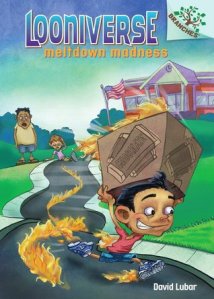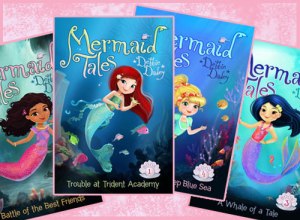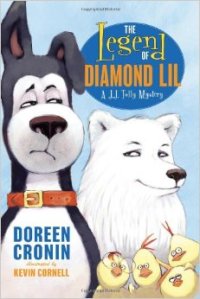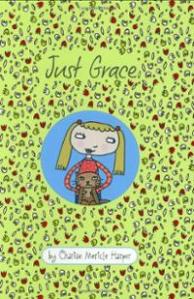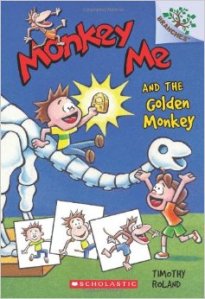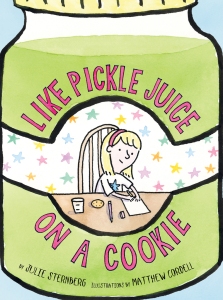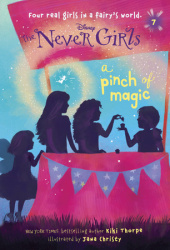Interview: Barbara Bottner
This week, I’m honored present a short interview with Barbara Bottner, a New York Times bestselling children’s book author. In addition to writing both picture books and early readers, Bottner also has enjoyed an incredibly diverse and intriguing career in the children’s publishing, educational and entertainment industries.
Bottner worked for Disney as a writer on the Winnie the Pooh series, created award-winning short films for Sesame Street and The Electric Company, wrote lyrics for Jim Henson’s “Fair is Fair” album for the Muppets, taught kindergarten, toured the U.S. and Europe as an actor and worked as a staff writer for Nickelodeon.
On May 12, 2015, Bottner’s new picture book was released. With lovely, poetic prose and easy humor, the book gently guides children through their last waking moments in a day:
 Feet, Go to Sleep
Feet, Go to Sleep
By Barbara Bottner, Illustrated by Maggie Smith
Published by: Knopf Books for Young Readers (May 12, 2015)
Available in: hardcover, kindle, NOOK
And now, the author’s interview with Chapter Book Chat:
CBC: You’ve written for children in many formats and genres. When you begin a project of a longer nature, such as an early reader or chapter book, do you have a particular process? Is this different from genre to genre?
BOTTNER: My process is the same in some ways regardless of genre but the same in other ways. First of all, there is an idea. The idea is pure. The core of something I think would be fun or challenging to explore. I always begin with characters, and characters beget dialogue and some shape for the story. How much story will there be is the question that begins to arise. It’s now in the process that I step back to decide what kind of manuscript this might become. If there is a lot of dialogue it might be a chapter book, although these days chapter books are more difficult in the marketplace. (previously, I did write a bunch) There is the sense that the characters and the ‘arena’ will tell me what the book needs to be. For longer books, I might start out a little more strategically. That is, with a theme I want to explore. I love longer stories but I’m not the best plotter in the world, so I have to be careful that I don’t get lost in a manuscript if I can’t organize the plot.
 CBC: Does your experience as an actor play into your feeling for dialogue, rhythm and/0r the meter of prose?
CBC: Does your experience as an actor play into your feeling for dialogue, rhythm and/0r the meter of prose?
BOTTNER: Funny you ask it now, because I just wrote a short theatrical piece that is being performed and had the pleasure of watching a rehearsal and admiring what the actors brought to it. I’m not sure there is a direct link, but more that my sense of drama and humor are at the core of who I am, thus what I end up writing. There is the training of an actor, which I think is helpful–to get into the character and even create backstories and other events that inform that character. So, all the training I’ve had, also as an artist, set designer, all play into the work. I also think being musical is a great thing for any writer. I have never played an instrument but I do appreciate music and have pretty good rhythm. Being able to connect to your various aptitudes, abilities, passions, can only help.
CBC: As a former teacher, what would you suggest writers think about when they consider kids and classrooms? Is there something that writers can do that would help teachers teach and kids learn?
BOTTNER: I am still a teacher, but for adults, although I’m hoping to work with teens soon. I will come clean and say I don’t think about the classroom when I write. I am trying to become authentically engaged in the world of the child, her emotions, her obstacles, and my own childhood issues, so I’m sort of inside that box, not outside of it. Having said that, editors will bring that up; and should, it’s part of their job to make the work relevant. When I was starting out, I used to study books about the kinds of personality changes and developmental changes kids went through as they went through elementary school. But my work is about really connecting on as deep a level as I can, to childhood, to the foibles and frustrations of childhood, so I can mirror real children. I believe we have to empower kids and validate who they are so they can feel free in who they are. This gives them a leg up as they go forward in life, this keeps them whole.
 CBC: You seem to use a lot of alliteration in your book titles (Rosa’s Room, Bootsie Barker Ballerina, Pish and Posh Wish for Fairy Wings). Is this just for fun, or is there a deeper reason?
CBC: You seem to use a lot of alliteration in your book titles (Rosa’s Room, Bootsie Barker Ballerina, Pish and Posh Wish for Fairy Wings). Is this just for fun, or is there a deeper reason?
BOTTNER: I am not truly conscious of alliteration any more than any wordsmith might be. It’s just fun. It rolls off the tongue easily. I think if you don’t love words, you shouldn’t tackle them. Words should be like good chocolate, pure pleasure. Or the pleasure of capturing something, nailing it down, bingo, I got it. I’m more aware of those issues.
What do you say teachers, parents and writers? Use the comment below and let’s chat….
